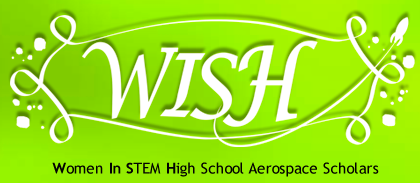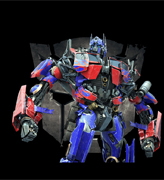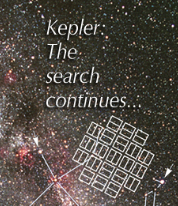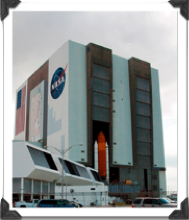
The application deadline is Dec. 28, 2012.
For more information and a link to the application, visit http://www.wish.aerospacescholars.org.

The application deadline is Dec. 28, 2012.
For more information and a link to the application, visit http://www.wish.aerospacescholars.org.

The NASA Explorer Schools project and the National Science Teachers Association are hosting a 90-minute professional development Web seminar for educators on Nov. 28, 2012, at 6:30 p.m. EST. Learn how to use an innovative air traffic control simulator to engage your students as they explore the mathematics involved in the role of an air traffic controller. In the three-plane problem featured in this lesson, the challenge is to change routes and speeds to line up the planes safely, with proper spacing, at a given route intersection.
This seminar will be repeated on Apr. 3, 2013.
You do not have to be part of the NASA Explorer Schools project in order to participate in this professional development Web seminar.
For more information and to register online, visit http://learningcenter.nsta.org/products/symposia_seminars/NES3/webseminar15.aspx.
 NASA has opened registration for the 2012 OPTIMUS PRIME Spinoff Video Contest. Featuring OPTIMUS PRIME, the leader from the popular TRANSFORMERS brand, the contest highlights spinoffs from NASA technologies that are used on Earth. The goal is to help students understand the benefits of NASA technology to their daily lives.
NASA has opened registration for the 2012 OPTIMUS PRIME Spinoff Video Contest. Featuring OPTIMUS PRIME, the leader from the popular TRANSFORMERS brand, the contest highlights spinoffs from NASA technologies that are used on Earth. The goal is to help students understand the benefits of NASA technology to their daily lives.
Each student, or group of students, will submit a three- to five-minute video on a selected NASA spinoff technology listed in NASA’s 2011 “Spinoff” publication. Videos must demonstrate an understanding of the NASA spinoff technology and the associated NASA mission, as well as the commercial application and public benefit associated with the spinoff technology.
Participants must register for the contest by Dec. 15, 2012.
Video entries will be posted on the NASA YouTube channel, and the public will be responsible for the first round of judging. The top five submissions from each of the three grade groups (elementary [3rd-5th], middle [6th-8th] and high school [9th-12th]) will advance for final judging. A NASA panel will select a winning entry from each group. The students submitting the winning entries will be the guests of honor at the OPTIMUS PRIME Spinoff Contest awards ceremony in May 2013. While there, the winners will receive the OPTIMUS PRIME Spinoff Contest trophy and have the opportunity to meet NASA VIPs, astronauts and actor Peter Cullen, who voices the character OPTIMUS PRIME.
TRANSFORMERS and OPTIMUS PRIME are trademarks of Hasbro and are used with permission. © 2012 Hasbro. All Rights Reserved.
For more information, visit https://www.nasa.gov/centers/goddard/news/releases/2012/12-077.html.
Questions about this contest should be directed to Darryl Mitchell at Darryl.R.Mitchell@nasa.gov.
 NASA is marking two milestones in the search for planets like Earth — the successful completion of the Kepler Space Telescope’s 3½ year prime mission and the beginning of an extended mission that could last as long as four years.
NASA is marking two milestones in the search for planets like Earth — the successful completion of the Kepler Space Telescope’s 3½ year prime mission and the beginning of an extended mission that could last as long as four years.
Scientists have used Kepler data to identify more than 2,300 planet candidates and confirm more than 100 planets – teaching us that the galaxy is teeming with planetary systems, that planets are prolific, and hints that nature makes small planets efficiently.
The information at https://www.nasa.gov/mission_pages/kepler/news/kepler_prime_mission.html is an excellent extension to the NASA Explorer Schools featured lesson, Algebraic Equations: Transit Tracks—Finding Habitable Planets.
 The Vehicle Assembly Building, or VAB, at NASA’s Kennedy Space Center in Florida is undergoing renovations to accommodate future launch vehicles. Space shuttle-era work platforms have been removed and accommodations are being made to support a variety of future spacecraft, including NASA’s Space Launch System heavy-lift rocket. The changes are part of a centerwide modernization and refurbishment initiative in preparation for the next generation of human spaceflight.
The Vehicle Assembly Building, or VAB, at NASA’s Kennedy Space Center in Florida is undergoing renovations to accommodate future launch vehicles. Space shuttle-era work platforms have been removed and accommodations are being made to support a variety of future spacecraft, including NASA’s Space Launch System heavy-lift rocket. The changes are part of a centerwide modernization and refurbishment initiative in preparation for the next generation of human spaceflight.
One of the largest buildings in the world, the VAB was constructed in the mid-1960s to support stacking of the Apollo Saturn V rockets that took American astronauts to the moon. In the late 1970s, the facility was refurbished to accommodate the space shuttle.
To read more about this renovation, visit https://www.nasa.gov/exploration/systems/ground/vab_platforms_removed.html.
This article serves as a good extension to the NASA Explorer Schools featured lesson, Linear Regression: Exploring Space Through Math—Space Shuttle Ascent. To access this lesson, first log into the NES Virtual Campus home page.

As part of a series of electronic professional development experiences for educators, the NASA Explorer Schools project and the National Science Teachers Association are hosting a 90-minute live professional development Web seminar for educators on Nov. 14, 2012, at 6:30 p.m. EST. Learn how to incorporate the excitement of rocketry into your classroom during this Web seminar and receive an overview of the student engineering design challenge, Spacecraft Structures, where students design and construct a strong, but lightweight, structure that can withstand the launch of a water bottle “rocket.”
This Web seminar will be repeated on Mar. 20, 2013.
For more information and to register online, visit http://learningcenter.nsta.org/products/symposia_seminars/NES3/webseminar14.aspx.

As part of a series of electronic professional development experiences, the NASA Explorer Schools project and the National Science Teachers Association are hosting a 90-minute Web seminar for educators on Nov. 13, 2012, at 7:30 p.m. EST. Learn to use a computer program simulating three high-power virtual microscopes: an atomic force microscope, a scanning electron microscope and a fluorescence light microscope. Viewing specimens include one-celled organisms, human tissue, computer chips, insects and fungi. You will get an overview of the software, watch videos of students exploring specimens and learn to use the Virtual Lab website and software.
For more information and to register online, visit http://learningcenter.nsta.org/products/symposia_seminars/NES3/webseminar13.aspx.
 Did you know you may be able see the International Space Station from your home? As the third brightest object in the sky, after the sun and moon, the space station is easy to see if you know where and when to look for it.
Did you know you may be able see the International Space Station from your home? As the third brightest object in the sky, after the sun and moon, the space station is easy to see if you know where and when to look for it.
NASA’s Spot the Station service sends you an email or text message a few hours before the space station passes over your house. The space station looks like a fast-moving plane in the sky, though one with people living and working aboard it more than 200 miles above the ground. It is best viewed on clear nights.
For more information and to sign up for alerts, visit Spot The Station.
This opportunity is a great extension to NASA Now: The Mechanics of Solar Panels. To access this episode of the Emmy Award winning NASA Now series, log into the NES Virtual Campus.
NASA’s car-sized rover, Curiosity, has taken significant steps toward understanding how Mars may have lost much of its original atmosphere.
Read more about Curiosity by visiting https://www.nasa.gov/mission_pages/msl/news/msl20121102.html.
To learn about the engineering and challenges involved in getting Curiosity to Mars, check out four special Mars Month episodes of NASA Now on the NASA Explorer Schools Virtual Campus. Stream or download these videos from http://explorerschools.nasa.gov.

As part of a series of electronic professional development experiences, the NASA Explorer Schools project and the National Science Teachers Association are hosting a 90-minute Web seminar on Nov. 7, 2012, at 6:30 p.m. EST. Discover a unique way of integrating robotic technology into your algebra classes. Robotic missions engage students and provide a unique way of bringing to life the concepts you are teaching. Learn to use programmable Texas Instruments, or TI, calculators and Norland Research Robots to solve problems requiring substituting values for variables in formulas.
This seminar provides an overview of using robotics in algebra so you can make an informed decision about purchasing the robots and other equipment. You do not need to have a Norland Research Robot or programmable TI calculator to participate in this seminar, or know how to program the calculator.
For more information, visit the online registration page.
Link to the NES Virtual Campus home page.